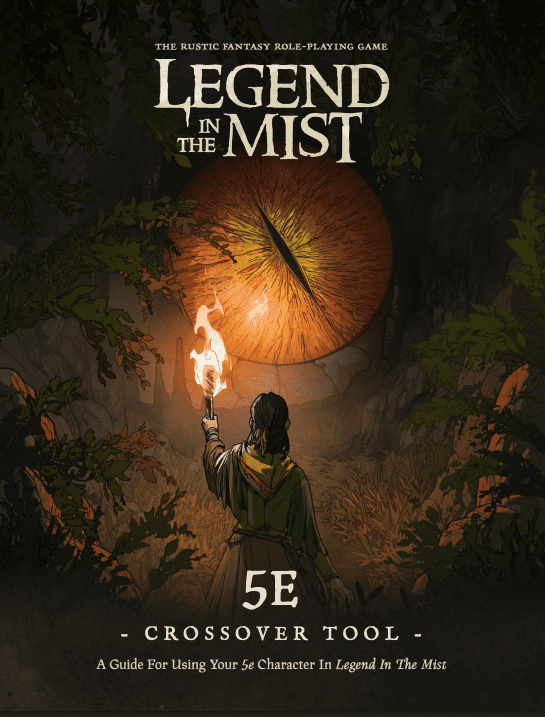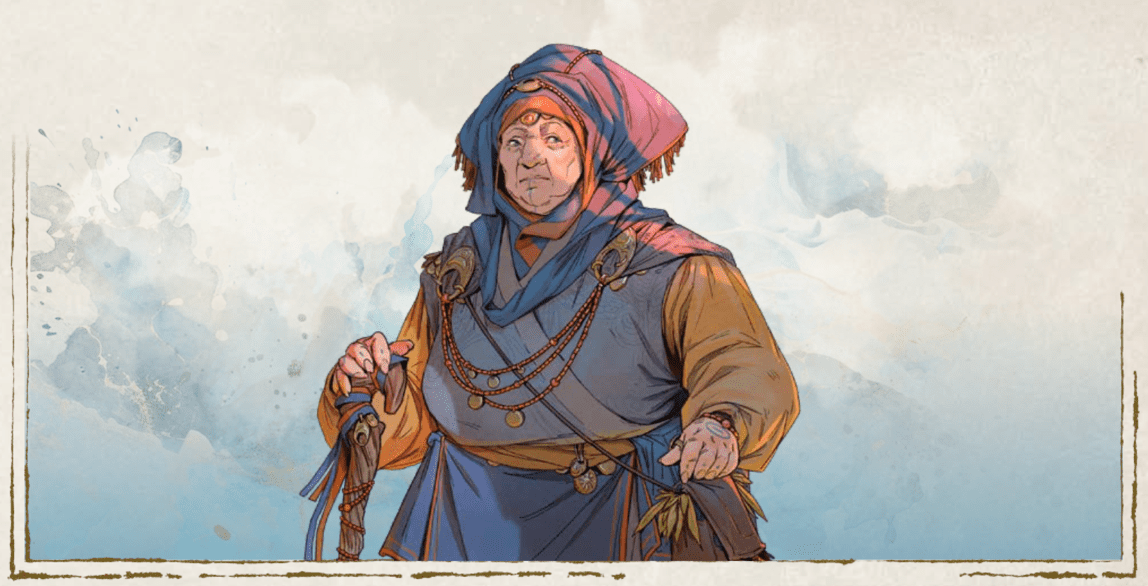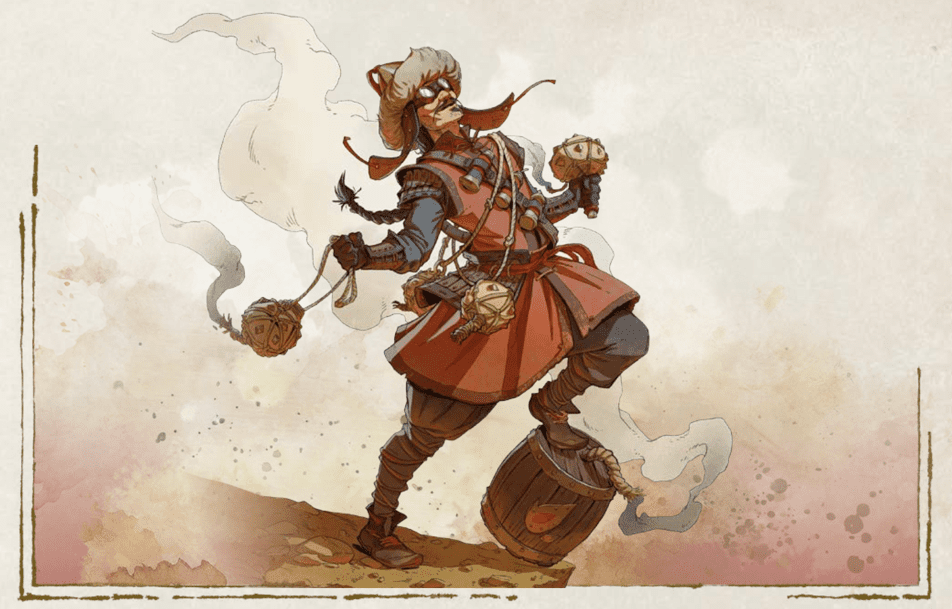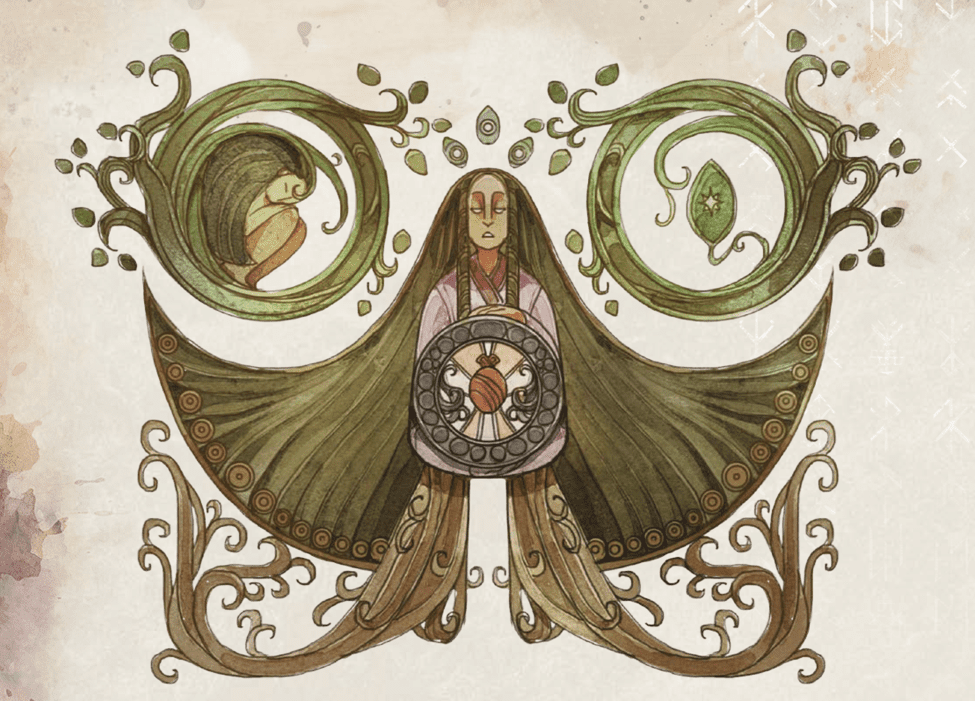Legend In The Mist 5e Crossover Tool for D&D players
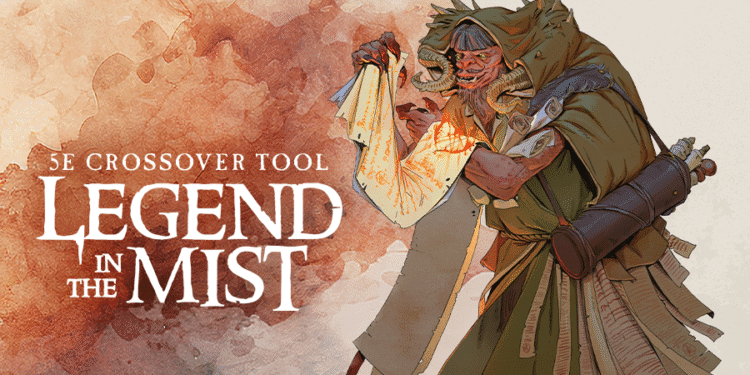
Guest Post By Coleman Gailloreto
Looking to tell new stories about characters from a Dungeons & Dragons campaign in a more narrative-focused RPG? Son Of Oak’s new 5e Crossover Tool is perfect for D&D 5th edition veterans who want to roleplay in exciting new ways, giving gamers and Dungeon Masters tips on how to translate their favorite characters into Legend In The Mist’s rules and craft tales of adventure steeped in the ambiance of “Rustic Fantasy.”
What Legend In The Mist’s Rustic Fantasy Genre is about
The term “rustic fantasy” shows up a lot in the promos for the Legend In The Mist roleplaying game, but what is the rustic fantasy genre, exactly?
In promo videos and blog posts, game developers at Son of Oak Game Studio have frequently cited works like Lord of the Rings, Wheel of Time, fairytales, and the movies of Studio Ghibli as big inspirations for Legend In The Mist. Specifically, they were inspired by the small moments of wonder in these fantasy stories –– the young hero leaving home for the first time, the magic lights shining in a forest by night, etc.
That’s rustic fantasy in a nutshell, a genre that embraces the secluded village over the towering castle, the witch’s cottage full of herbs over the floating wizard’s academy, the enchanted woods over a dungeon full of traps. That’s not to say that castles, wizarding schools, and dungeon crawls can’t show up in Legend In The Mist campaigns! Rather, the rules and themes of LitM try to highlight the intimate, beautiful details of magic, nature, and community that make the great fantasy stories come alive.
Which begs the question: how does the Legend In The Mist 5e Crossover Tool help D&D veterans tell stories in this rustic fantasy genre?
The 5e Crossover Tool helps D&D players master Legend In The Mist’s rules:
They’re both fantasy roleplaying games, but D&D and Legend In The Mist are very different, rule-wise.
Dungeons & Dragons 5th edition traces its roots back to tabletop war-games from the 1970s, blending tactical rules with clearly defined character classes. Legend In the Mist, born from the indie RPG boom of the 2000s/2010s, centers its roleplaying around storytelling by using “theme” descriptions and keyword “tags” to describe characters and challenges –– in other words, defining the world with words instead of numbers.
The 5e Crossover Tool helps D&D players port their characters into Legend In The Mist by giving them detailed lists of themes and tags that closely match the character class powers of D&D (5th edition 5.1 SRD). It’s also full of side-bars that teach players how Legend In The Mist works by contrasting it with D&D’s rules (for example, items in a LitM character’s inventory only have tags if they’re an important part of the character persona).
The 5e Crossover Tool gives D&D players new ways to grow characters
By default, character growth in Dungeons & Dragons is fairly linear; as player characters level up, they unlock new abilities from their character class list. It makes upgrading characters fairly quick, but can limit the range of heroes players can make (even with level-up options such as backgrounds, feats, and multi-classing).
Legend In The Mist takes a more freeform approach to character generation, letting players create any kind of hero by combining four different themes that describe their abilities, origins, relationships, and powers. It gives players a lot of freedom, but also puts more pressure on them to be creative and come up with a character they’ll have fun portraying.
The big perk of translating D&D player characters into Legend In The Mist with the 5e Crossover Tool is that it frees PCs to grow in directions D&D’s rules don’t support. They can “level-up” traditionally by increasing the Might rating of a character’s theme, broaden their character by adding more tags to a theme, and even rewrite their characters by replacing themes after certain player actions (for example, breaking a magic sword to save someone’s life).
The 5e Crossover Tool lets gamers run campaigns with mixed-level parties
Fantasy stories like the Hobbit or Lord of the Rings, where small hobbits like Frodo do more to save the world than mighty wizards like Gandalf, had a big influence on original Dungeons & Dragons. It can be hard to simulate such plots in most fantasy RPGs, though, since “mixed-level” adventuring parties can make players who control the “low-level” characters feel useless or irrelevant.
One big goal Son Of Oak had when designing Legend In The Mist was to make an RPG where “underdog” heroes like Frodo could be just as fun to play as mighty heroes like Gandalf. They accomplished this by making the Themes of Legend In The Mist characters double-edged swords. Each core theme comes with “weakness tags” that can penalize certain character actions, while themes with a high level of Might can be blessings or curses depending on the narrative (for instance, a character with a high Might theme called “Ancient Dragon” might be powerful in a fight, but struggle to befriend skittish villagers).
Thanks to this approach to character design, D&D players who port their characters into Legend In The Mist with the 5e Crossover Tool can easily assemble adventuring parties like the Fellowship of the Ring. Player characters with high levels of Might will be genuinely powerful, yet also constrained by said power, while PCs with low levels of Might will be versatile and freer to act in a wide range of non-combat situations.
Conclusion:
Son Of Oak’s 5e Crossover Tool is a great resource for D&D players who want to try out Legend In The Mist without ditching their current campaign or cast of characters. It’s also a great tool for Dungeon Masters who want to run side adventures for their group that focus on backstories, interpersonal relationships, or the charm of the communities that adventurers pass through.
To grab the 5e Crossover Tool, visit this Drivethru RPG page.

